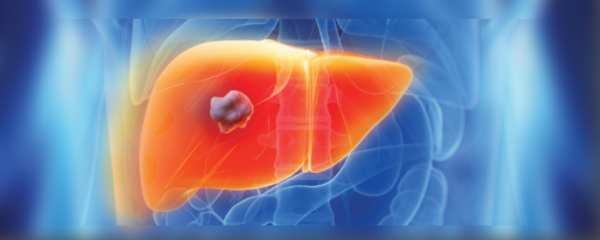The threat of liver cancer remains despite successful HCV treatment

Hepatocellular carcinoma (HCC) or liver cancer is currently the third leading cause of cancer deaths worldwide, affecting over 500,000 people. One of the major risks for the development of HCC is persistent infection with hepatitis C virus (HCV) and cirrhosis. Despite the recent development of direct-acting antivirals (DAAs), which has given hope to millions of liver disease patients around the world as they have made clearing the hepatitis C virus possible, the burden of HCC and cirrhosis caused by hepatitis C is likely to continue to grow.
Theoretically, the high success rates of DAAs now used to treat patients with HCV will lower the number of patients that would progress to cirrhosis and HCC. However, a study conducted by the University of Washington - School of Medicine predicted that the incidence of both cirrhosis and HCC are likely to continue to rise in the United States until 2021. [1] This is because DAAs are only designed to eradicate the virus; they do not help to restore liver health and normal liver function. Therefore even after successful DAA treatment, the damage that has occurred to the liver cannot be undone or wholly reversed without post treatment recovery care. People who have undergone treatment remain at elevated risk of HCC, especially those who have suffered many years of liver damage as a result of hepatitis C. The longer a patient has been infected with HCV, the greater the chance for abnormal liver cells to transform into cancer cells. [2]
This is supported by research, which has shown that a long-term risk for liver cancer remained in their study participants, even in some of those who have achieved sustained virological response (SVR). According to a clinical study, 5% of participants who achieved SVR subsequently developed liver cancer over an average observation period of five years. Moreover, among participants who did not experience SVR, cases of liver cancer were at least twice as high as among participants who did achieve SVR. [3]
In other words, achieving SVR does not indicate that damaged liver cells are healed and the risk of progression to HCC is relieved. Post-treatment regular monitoring and protective measures are needed to reduce the risk of developing tumours. To safeguard the liver from HCC, recovery of liver cells and long term protection is required. This can be achieved through YHK, a scientifically based natural liver therapy from Japan. Research has proven that it helps with the repair of damaged liver cells and regeneration of healthy liver cells. In addition, YHK has been shown to exert protective anti-tumour effect that helps to prevent liver cancer. Also, it has been scientifically proven to decrease the proliferation rate of human liver cancer cell growth and enhance the oxidative stress of liver cancer cells, which significantly increases apoptosis (programmed cell death). [4][5]
DAAs are no doubt a big step forward in the treatment of hepatitis C, but let’s not forget our ultimate aim and wish: ensuring liver health, good liver function, and preventing liver cancer.
- Threat of Cirrhosis Estimated to Peak by 2021, no End in Sight for HCC. Retrieved from http://www.prnewswire.com/news-releases/threat-of-cirrhosis-estimated-to-peak-by-2021-no-end-in-sight-for-hcc-300179015.html (Accessed: 2016-08-06)
- Liver cancer risk will remain elevated for people with cirrhosis cured of hepatitis C. Retrieved from http://www.infohep.org/Liver-cancer-risk-will-remain-elevated-for-people-with-cirrhosis-cured-of-hepatitis-C/page/3014752/ (Accessed: 2016-08-09)
- Exploring the risks of liver cancer after successful treatment for hepatitis C virus. Retrieved from http://www.catie.ca/en/catienews/2013-06-11/exploring-risks-liver-cancer-after-successful-treatment-hepatitis-c-virus (Accessed: 2016-08-06)
- In vitro study on the mechanisms of action of a novel phytotherapeutic compound against human hepatoma cells
- Inhibitory Action of a Novel Phytotherapeutic Compound Against Human Hepatoma Cells
- * All research and clinical data should be used as reference purposes only, results may vary.






